The other day, I was contacted by Sean, a Serbian-American musician working on a project of recording music videos at mysterious archeological sites around the world. What better country could he have found for that than Greece? He found me via a post of mine about a day trip to the Dragon House of Mount Ochi, which he intended to visit. In the end, we made that trip to the Dragon House together, but before that, we came to plan yet another great excursion out of Athens. Our destination for this day trip was Argolis Prefecture and a bunch of its renowned prehistoric sites; namely, the ancient city of Mycenae and the nearby Treasury of Atreus, the Block House of Fichti village, the Ancient Theatre of Argos, the Pyramid of Elliniko village, and lastly, the Ancient City of Tiryns. Following are the story/itinerary of this day trip, photos, and videos from the sites, as well as the music video we recorded together.
Mycenae Archeological Site
Shortly after 6 am of a warm day in September, downtown Athens, guitars and recording equipment in my car’s boot, we set off on our drive towards Peloponnese. The sunrise met us sometime before crossing the Isthmus of Corinth and heralded a brilliant, blue sky. At 8 am sharp – the exact opening time of the archeological site – we were parked before the glorious city of Mycenae.
The Mycenae was a city (more of a citadel) that thrived in the 2nd millennium BC and, during its heyday, dominated over much of southern Greece and Aegean regions. So important a city indeed it used to be that an entire era associated with its power has remained known as the Mycenaean Age. The city began declining by 1200 BC and was completely abandoned by the turn of the millennium. Its fall signifies the advent of the Greek Dark Ages that suppressed civilization in Greece for centuries to come.
By the time of Classical Greece, the Mycenae was already buried and only survived in legends fed by poetic works such as Homer’s epics. It was thanks to clues in the latter that German archeologist Heinrich Schliemann, in the late 19th century, managed to trace its location and excavate it, thus exhuming it from the obscurity of mythology and throning it in its rightful place within the realm of history.
Back in 2020, we proceeded to the gate and purchased a €20 ticket valid for a number of different archeological sites in the vicinity. A ticket for the Mycenae alone would have cost us €12. An issue arose when the staff prohibited us from carrying inside guitars and tripods. I totally get the logic behind the former: imagine if anyone came to have a gig within the site and busk and stuff… But as for the tripods, the only reasoning was “alright, you have a tripod, which means that you are a professional photographer, which means that you earn money for your pictures, in which case you have to pay us a commission by obtaining a special permit”… Bullshit is the only thing I have to comment.
Anyhow, we passed the Lion Gate and got to stroll along the millennia-old paved streets. Just like every time, it is an absolute thrill to walk among these noble walls of Mycenae and try to fantasize what this place might have been like during its acme. We devoted the due time to exploring the ruins and marveling at the wide surrounding views, took a look in the museum as well, and headed off towards our next destination.
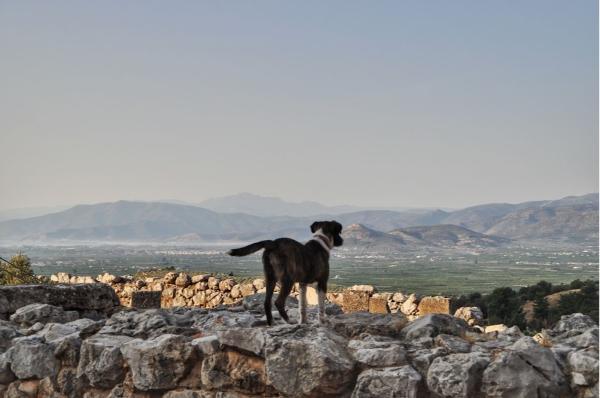
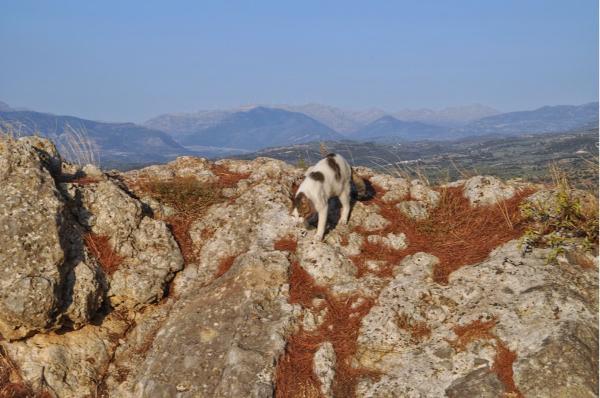
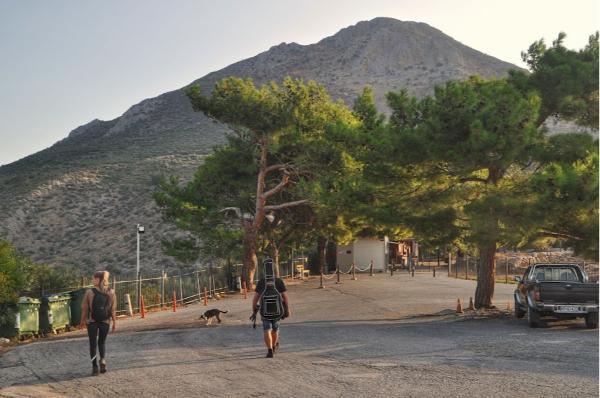
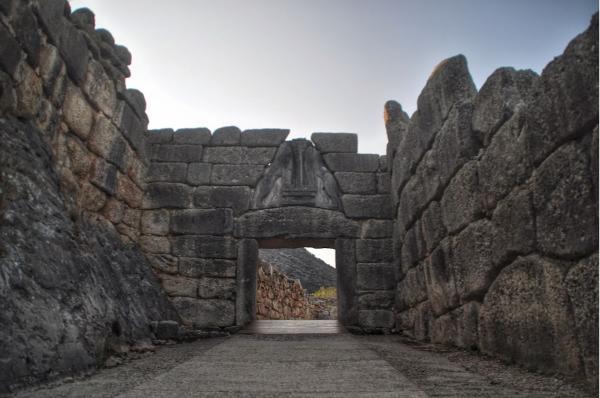
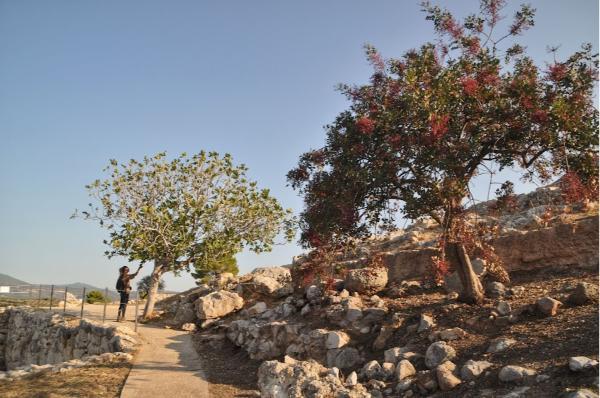
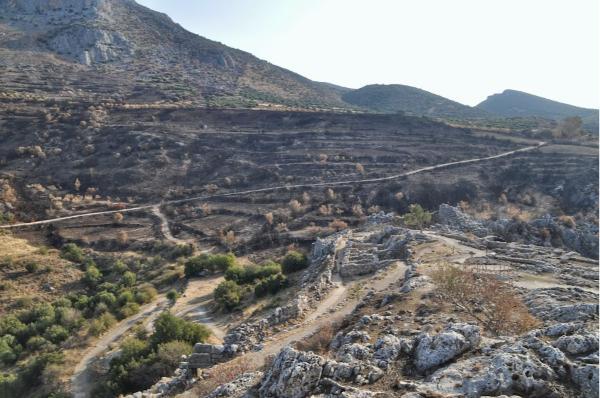
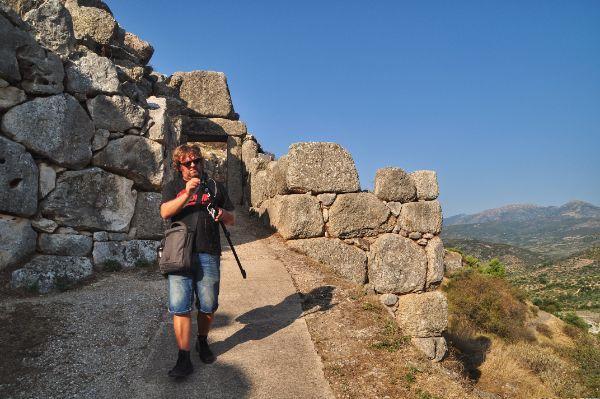
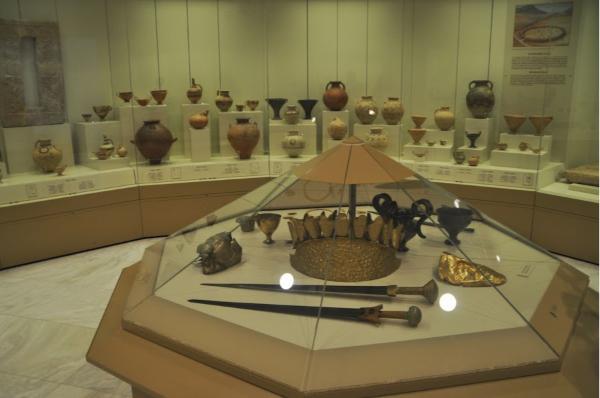
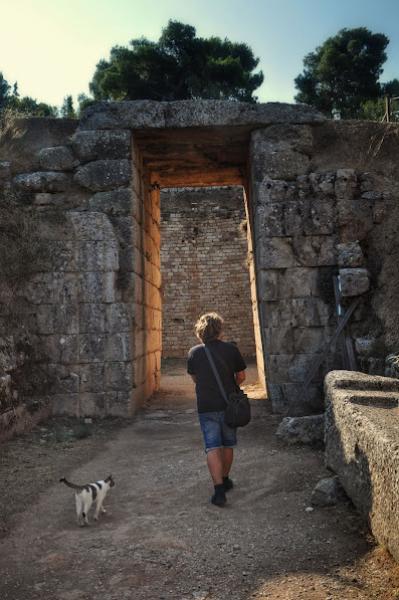
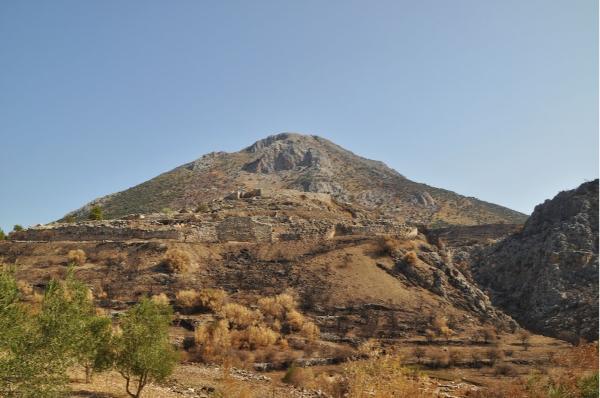
Treasury of Atreus
A couple of hundred meters along the road before the hill of Mycenae, there lies the most impressive sight of the area. The Treasury of Atreus, also known as the Tomb of King Agamemnon, is an enormous tholos (beehive grave) where either of Mycenae’s legendary rulers, Atreus or Agamemnon, is believed to have been buried. The tomb was never fully buried and has remained partly visible throughout its entire history. It was already looted by the time Schliemann rediscovered it and fully excavated it.
The edifice awes by its sheer size. The stone lintel placed above the door weighs an impressive 120 tons and it’s said to be the largest of its kind in the world. Remarkable also are the acoustic properties of the tomb’s interior. You must walk in yourself and hear the echo to fully appreciate its queerness.
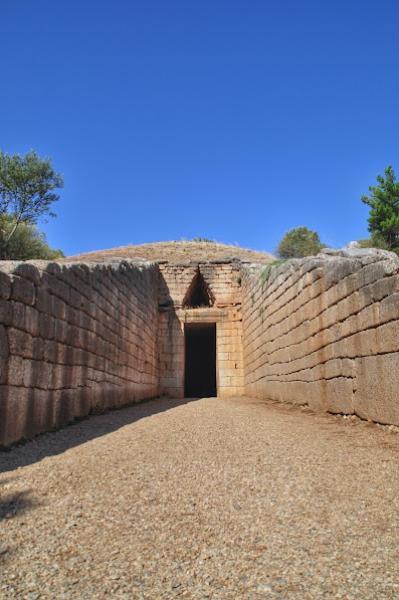
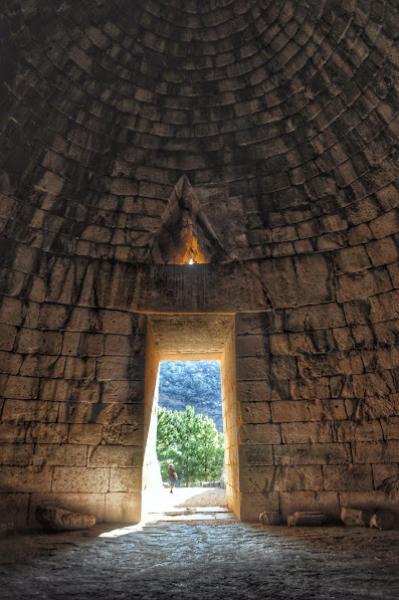
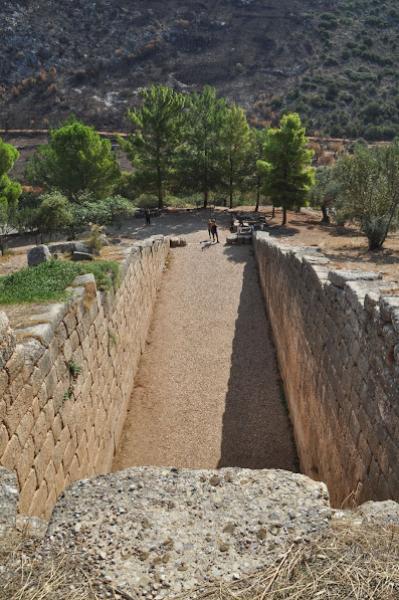
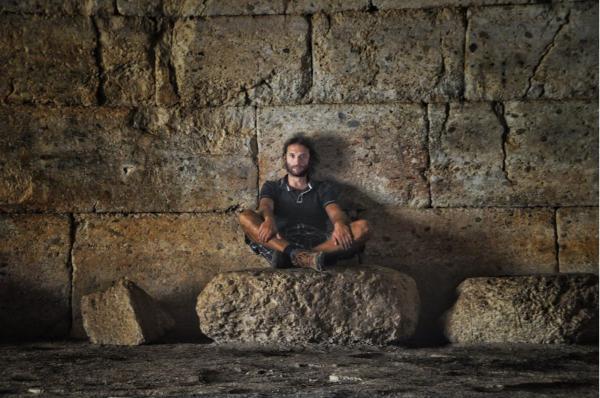
Fichti Block House
Although Mycenae is one of the most acclaimed and visited archeological sites of Greece, few of the myriads of visitors are aware of the existence of this hidden, free-to-visit ancient gem in its vicinity. The Block House of Fichti is a square megalithic structure that probably functioned as a military outpost at a long bygone time. That was our next destination for this day trip.
Fichti Block House is situated some 5 km northwest of Mycenae. To find it, you take the road north from Fichti village towards Athens, you take a left at 37.7405, 22.7345, and you follow the sketchy road for a bit more than a km until you see the structure, standing lonely and proud amid the desolate land.
Since we weren’t allowed to record within the site of Mycenae, here was the perfect spot to do so. We sat on the bulky, timeworn walls and did a cover of the Beatles’ While my Guitar Gently Weeps, which you can listen to below.
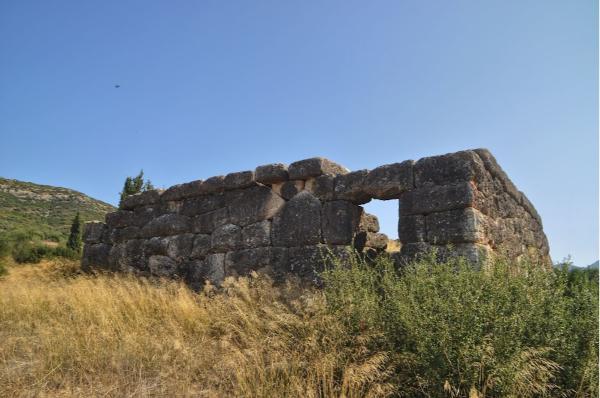
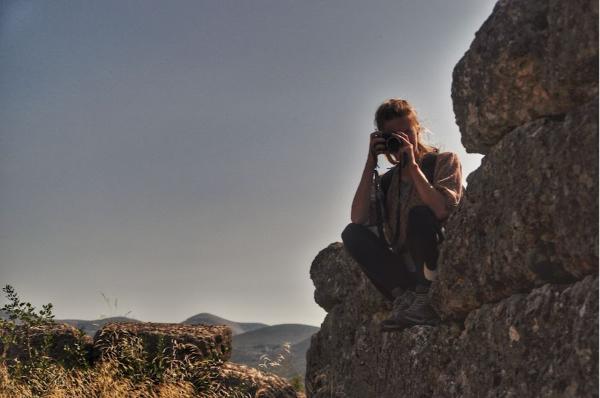
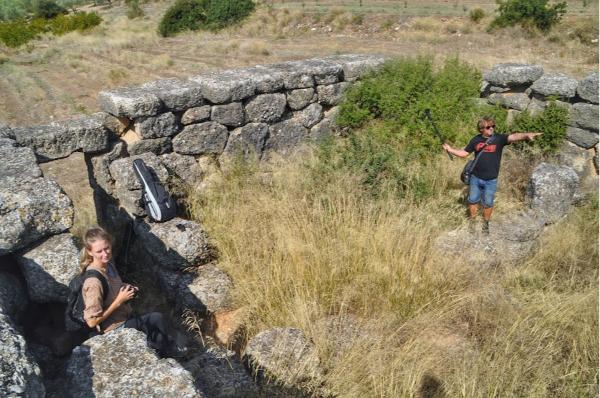
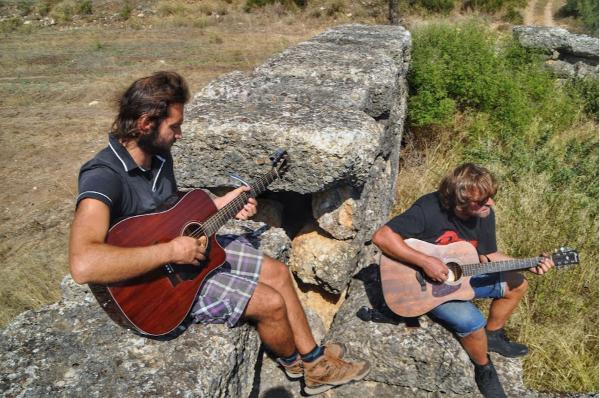
Argos City & Ancient Theatre
Next, we headed back south again to Argos city. It was past midday already and our stomachs longed for some content to be thrown in them. We got that in the form of some pastry from a local bakery and a bunch of big, juicy grapes.
Before driving out, we devoted some time for a stroll and a brief visit to the city’s archeological site, which is mostly celebrated for its ancient theatre. This Hellenistic-era theatre was built in 320 BC and, holding up to 20.000 spectators, is considered one of the country’s largest.
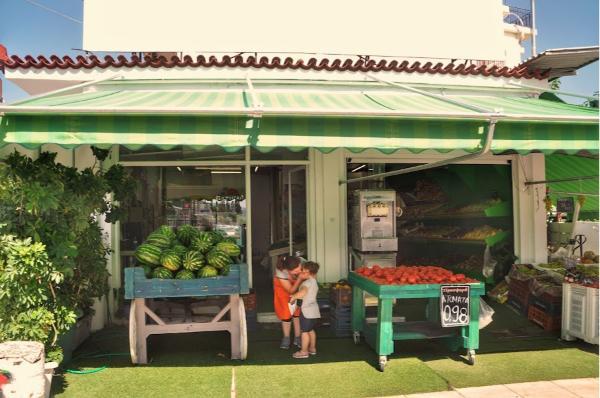
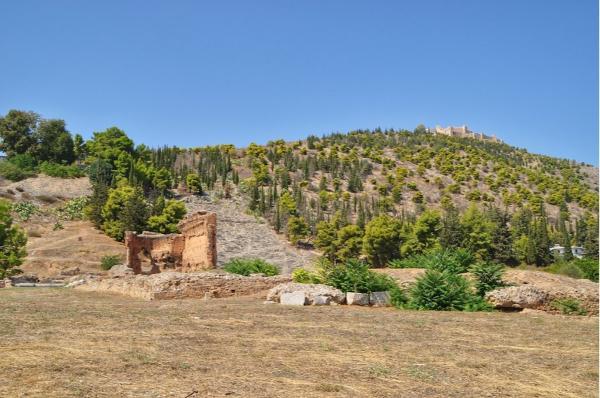

Elliniko Pyramid
Our next destination was yet another little-known, unorganized, Mycenaean megalithic structure. It is known as the Elliniko Pyramid. Yes, you read right; the peoples on the south coast of the Mediterranean did not have a monopoly.
Elliniko village, which borrows its name to the pyramid, is located atop a hill some 7 km southwest of Argos city. The pyramid is to be found at its eastern entrance, by a church, and its exact coordinates are: 37.5872, 22.6714. It is visible from the road and no hike is required to reach it; you can park right in front of it.
The pyramid, obviously, is nothing as impressive as the ones in Giza. In its day, it must have reached a total height of some 10-12 meters, but now it’s missing its upper half. It, nevertheless, has its definitive charm; plus that you can freely climb it without having to bribe the police (like I did in Giza). The view from the pyramid down to Nafplion Bay is also mind-blowing and offers some amazing photographic opportunities.
Originally, we were planning to do there yet another music video, but we had to skip that since we wanted to reach Tiryns before it closed.
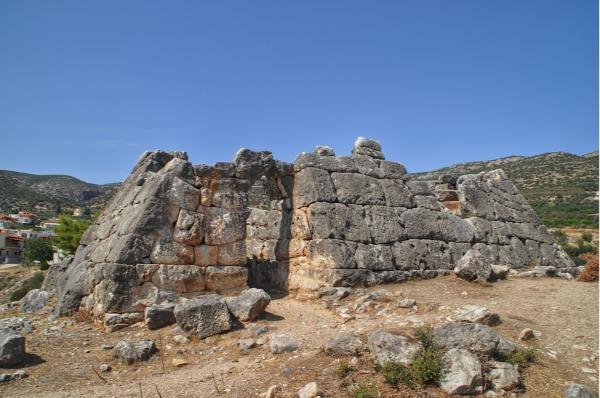
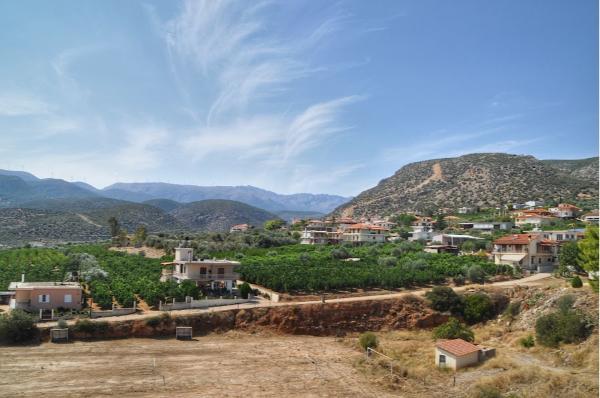
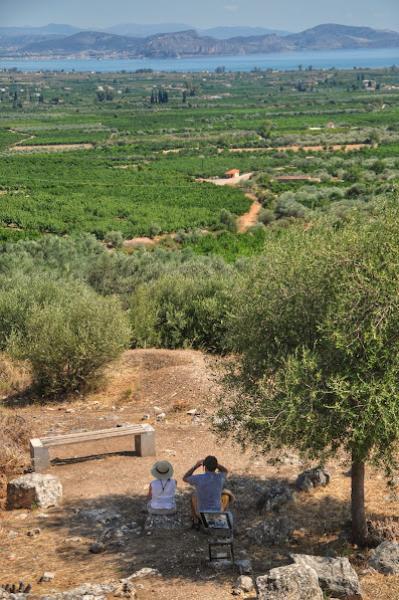
Ancient Tiryns
We rolled down the hill and drove along the picturesque coast of Nafplion Bay. Shortly before reaching Nafplion city, we took a left through the fields and arrived at our last destination for this pleasant day trip.
The ancient citadel of Tiryns is another of Greece’s most eminent archeological treasures. The site is believed to have been inhabited since 5000 BC and experienced the height of its glory in the 14th and 13th centuries BC. At the time, it was one of the most paramount centers of Mycenaean culture and maintained a population of as many as 15.000 people. It had been especially known for its exquisite fortifications – its massive cyclopean walls and intricate tunnel networks – which urged Homer to refer to it by the epithet of mighty-walled Tiryns. The city has been particularly associated with Heracles, as it is stated to be the place the hero resided in during the performance of his legendary twelve labors.
Just like with Mycenae, earlier this morning, we were lucky to witness the site bereft of tourist flocks – a rare occurrence indeed – thanks to (irony intended) the travel-industry-crumpling COVID pandemic. No-one but a couple of staff were present on site.
We had a delightful walk through the ancient citadel’s pathways, took some nice pictures, and off we set. We were back in Athens shortly before sunset.
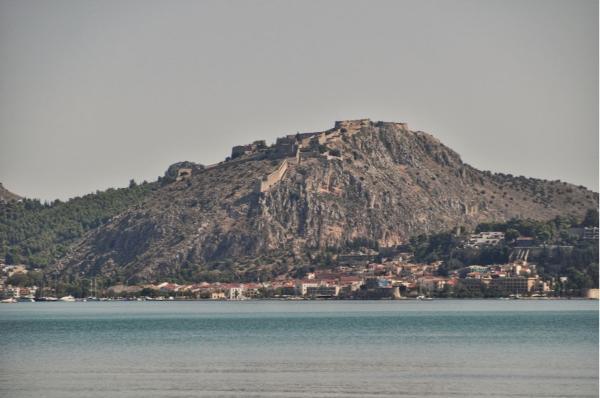
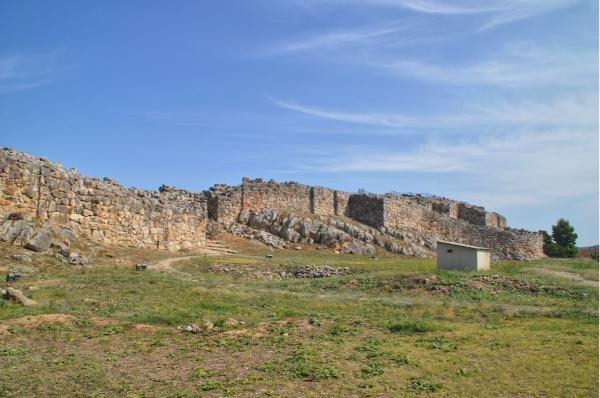
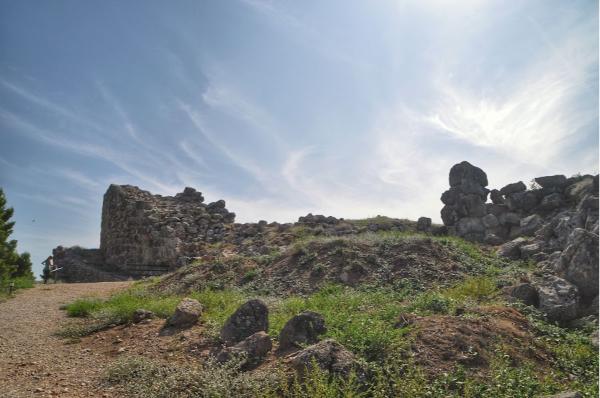
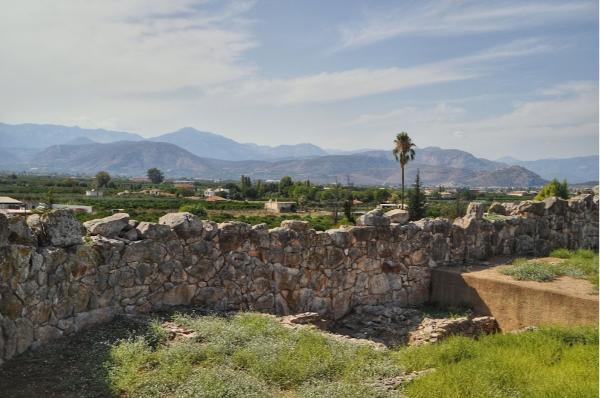
Accommodation and Activities in Greece
Stay22 is a handy tool that lets you search for and compare stays and experiences across multiple platforms on the same neat, interactive map. Hover over the listings to see the details. Click on the top-right settings icon to adjust your preferences; switch between hotels, experiences, or restaurants; and activate clever map overlays displaying information like transit lines or concentrations of sights. Click on the Show List button for the listings to appear in a list format. Booking via this map, I will be earning a small cut of the platform's profit without you being charged any extra penny. You will be thus greatly helping me to maintain and keep enriching this website. Thanks!
